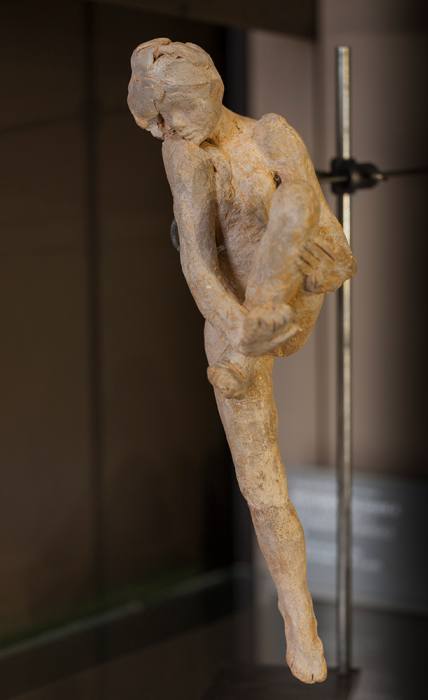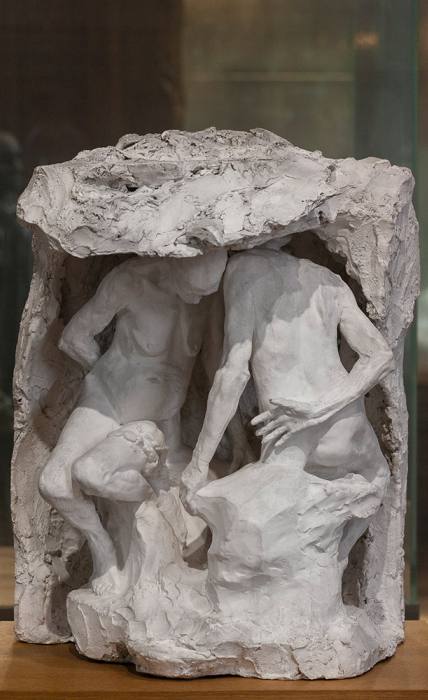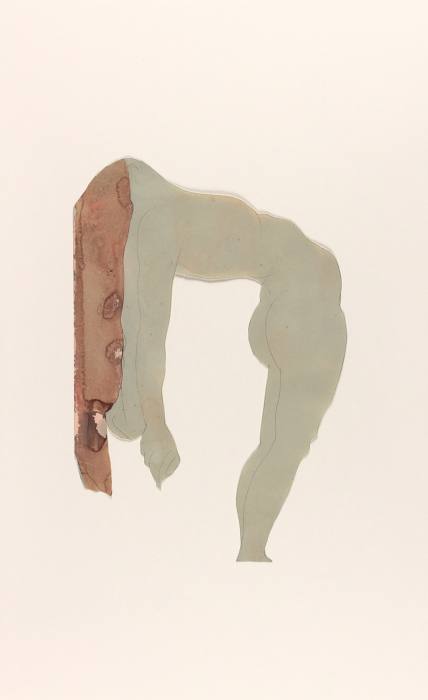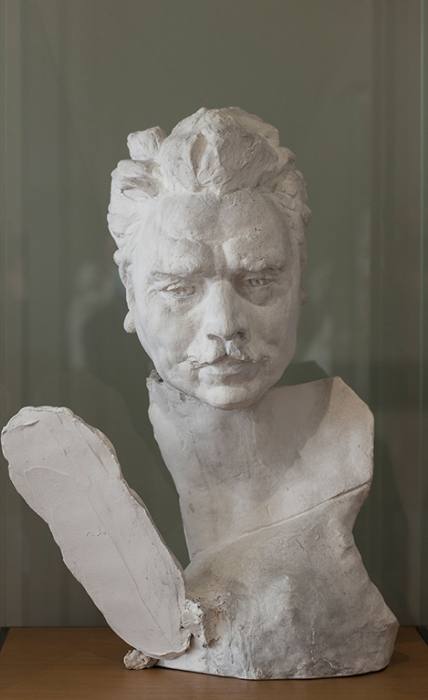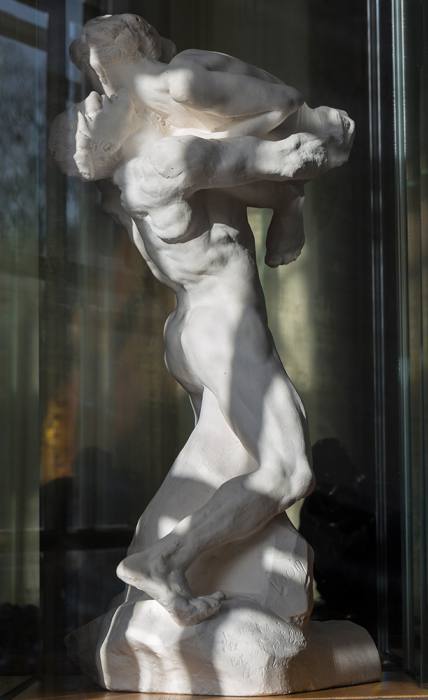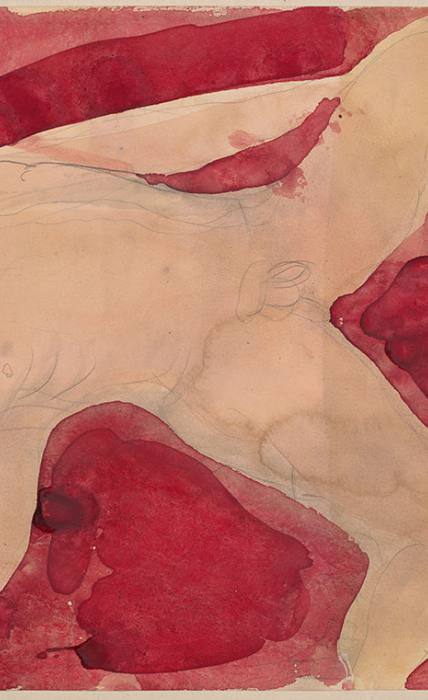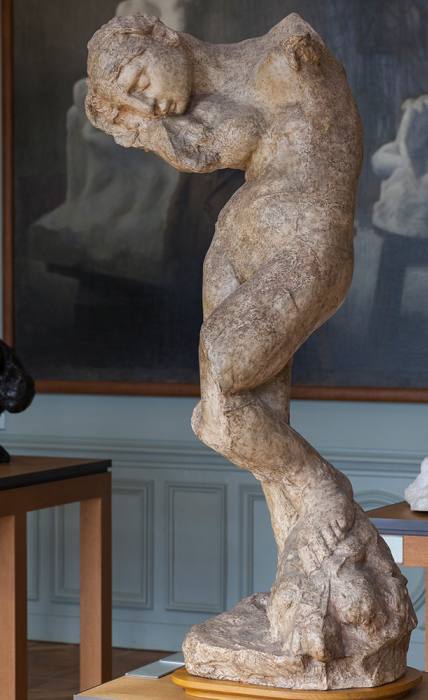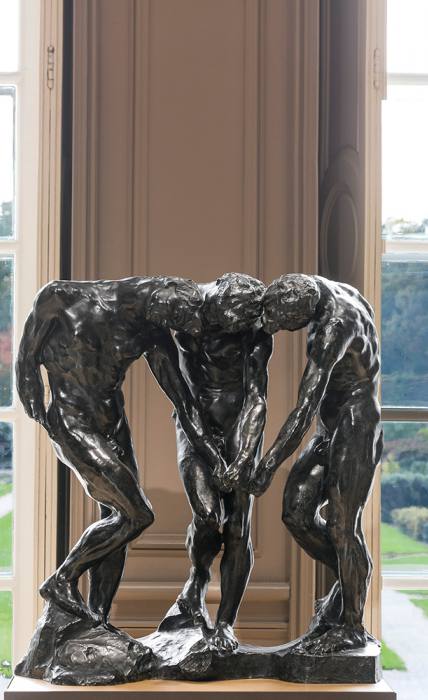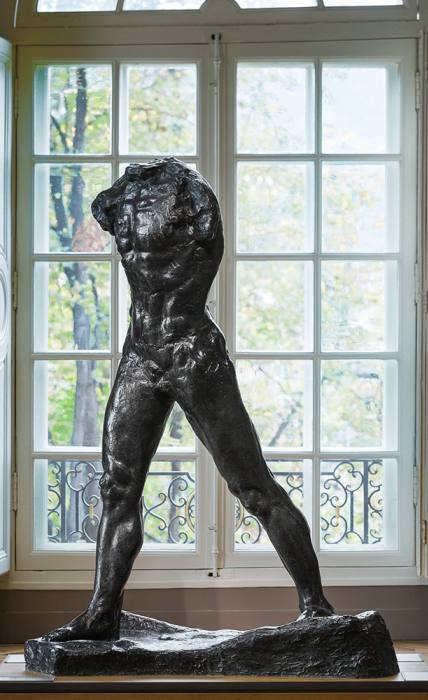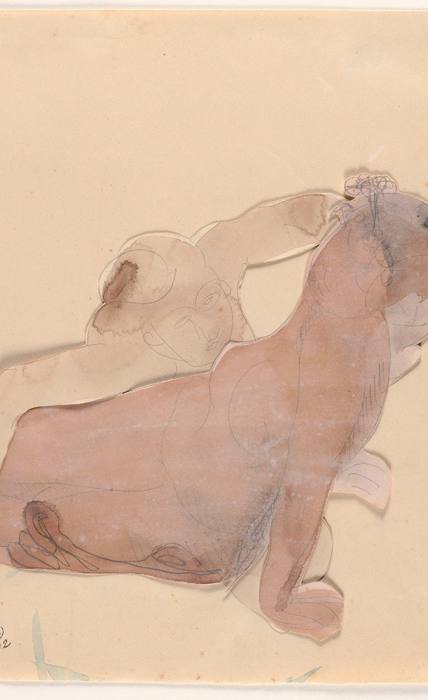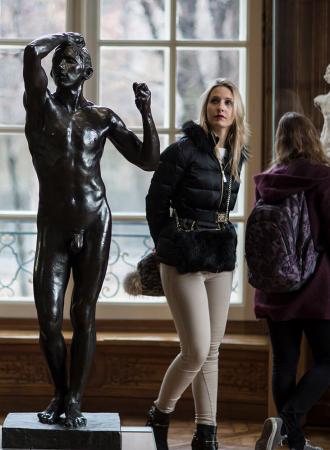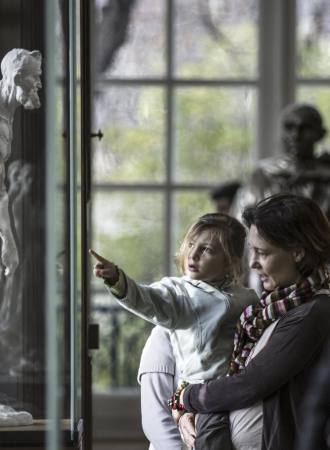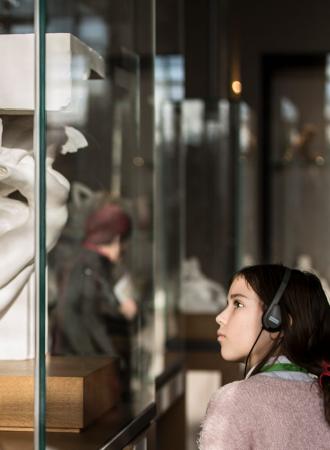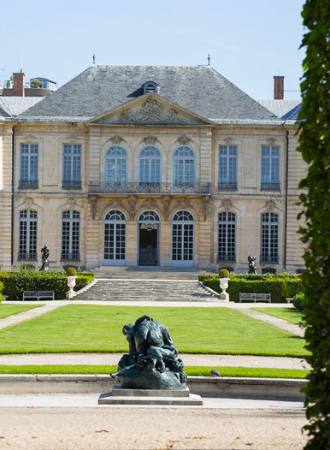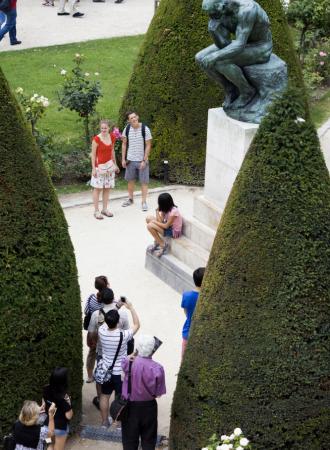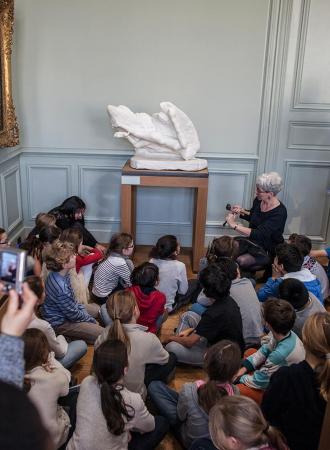Search the site
Copying, cutting, pasting
Variation, imitation, multiplication, assemblage, cutting-out and pasting were central to Rodin’s sculpture and drawing. His work thus provided him with an endless source of new forms. He repositioned figures, pasted them together, added or removed elements and fragmented them in a very free and inventive creative process that continues to intrigue and inspire.
Joining together
With casts of his sculptures and tracings of his drawings, Rodin could use the same forms as often as he wanted. He thus reworked and assembled different or identical figures to create new groups such as I Am Beautiful, The Three Shades and Dried-Up Springs. He did the same with some of his drawings which he cut out and pasted, joining separate paper figures together like real couples. He played with different proportions or materials to create unusual and poetic combinations, such as the small female nude that he placed in a snake-shaped vase from his private collection.
Cutting down to the essential
Convinced of the evocative power of the fragment, Rodin worked the hands or feet of his figures separately. His private collection of antiquities included many archaeological fragments: hands, heads, and torsos such as that of the Egyptian king Ptolemy. These sculptures influenced his own aesthetic, prompting him to remove the arms or heads from some of his sculptures. The Walking Man, for example, is an enlarged version of St John the Baptist, without the head and arms which Rodin regarded as superfluous details, liable to detract from the expression of movement he wanted to convey. Similarly, he cut out figures to free them from the space of the page and from any implicit meaning.
Selection of works
-
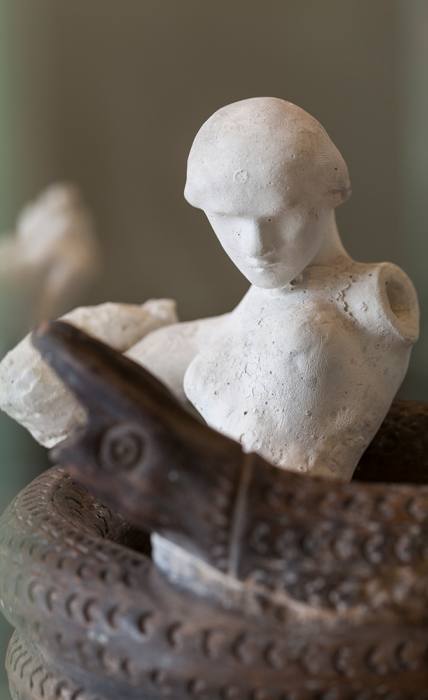
Assemblage: Female Torso with the Head of a Woman with a Chignon and Coiled Snake
Auguste Rodin (1840-1917)
-
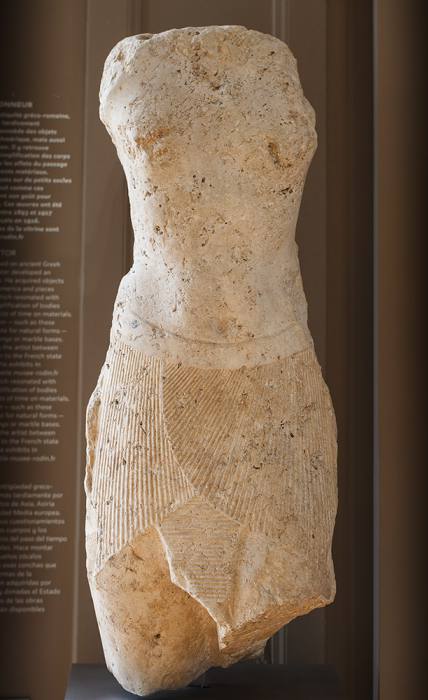
Statue of King Ptolemy III Euergetes I
Acquired by Rodin on 4 March 1908 from the antiquarian Spiridon Castellanos
